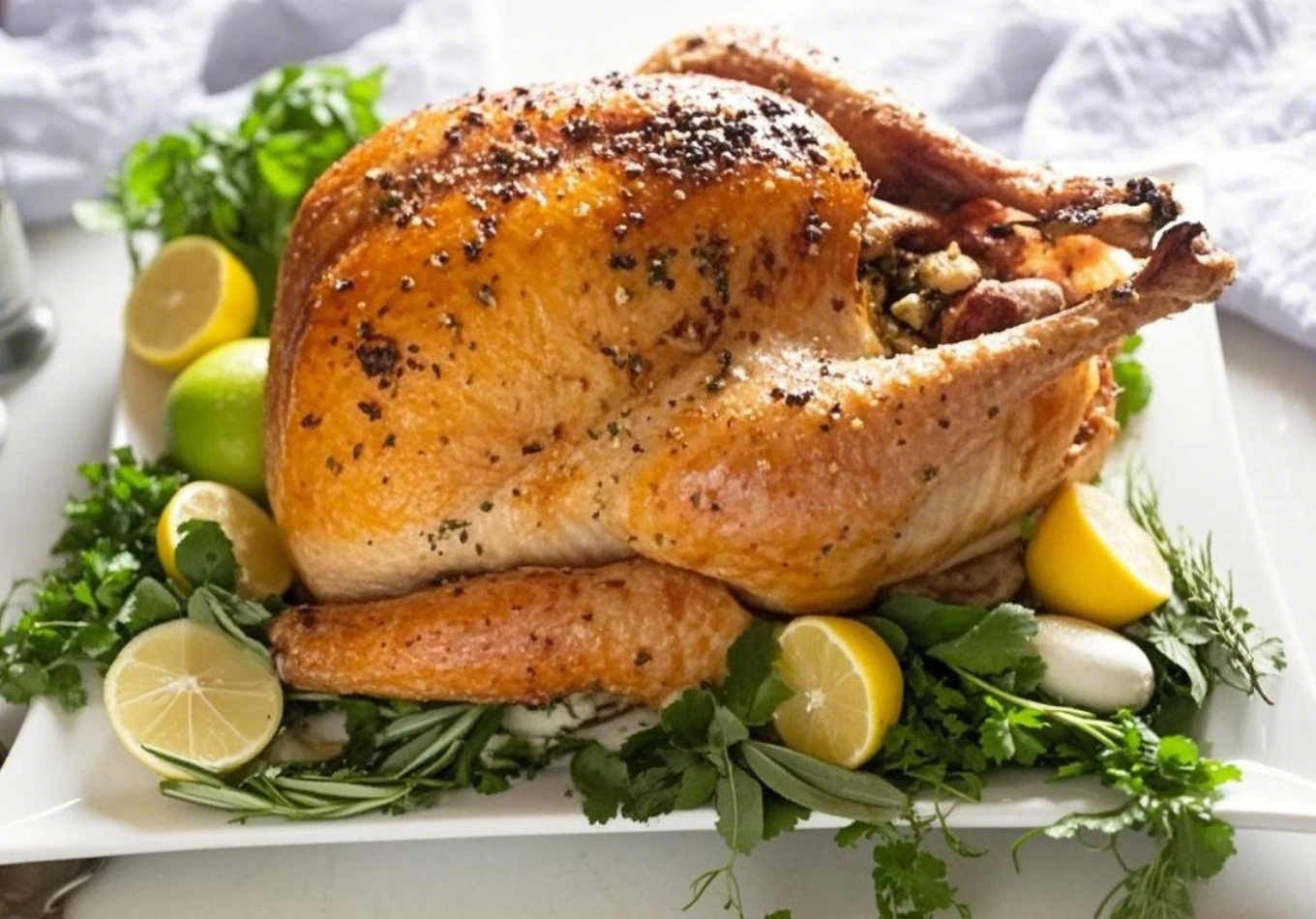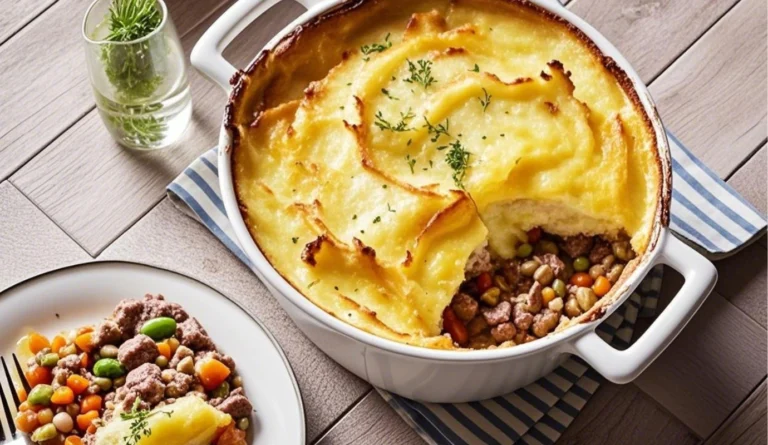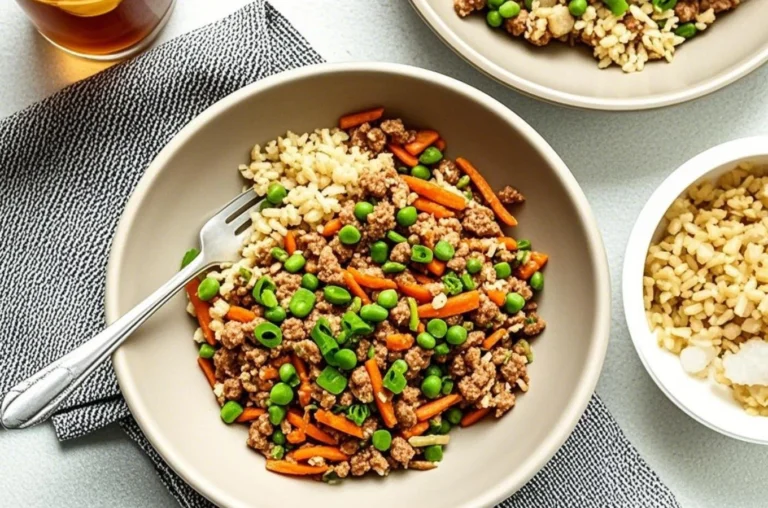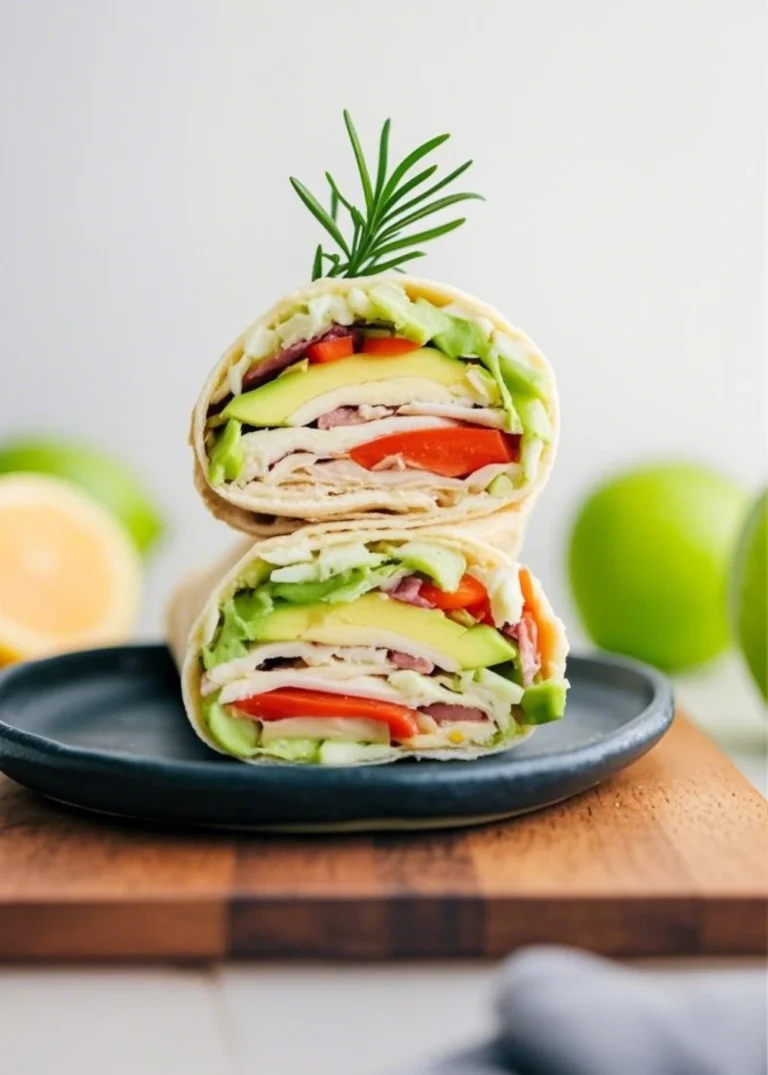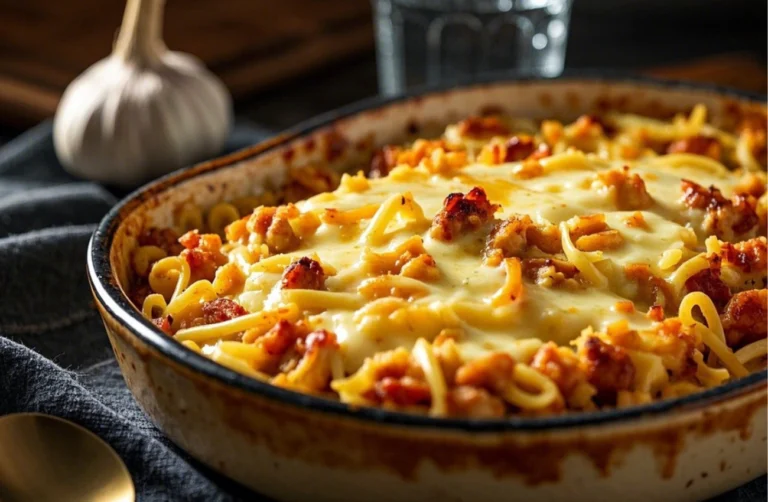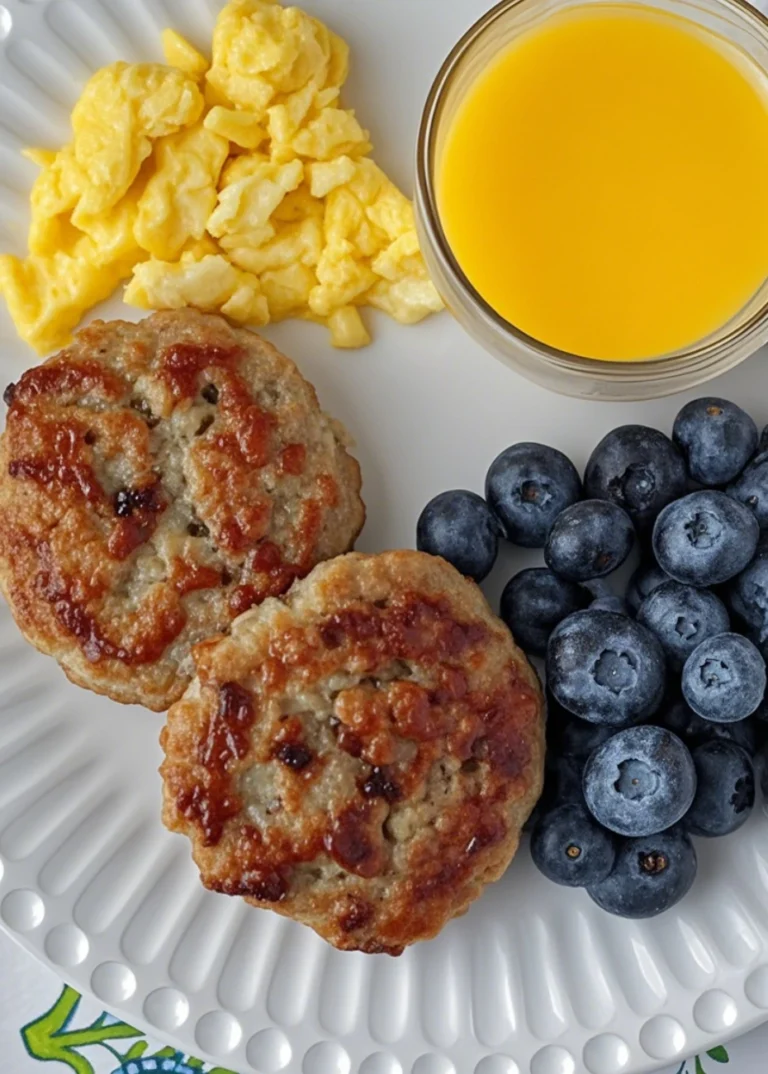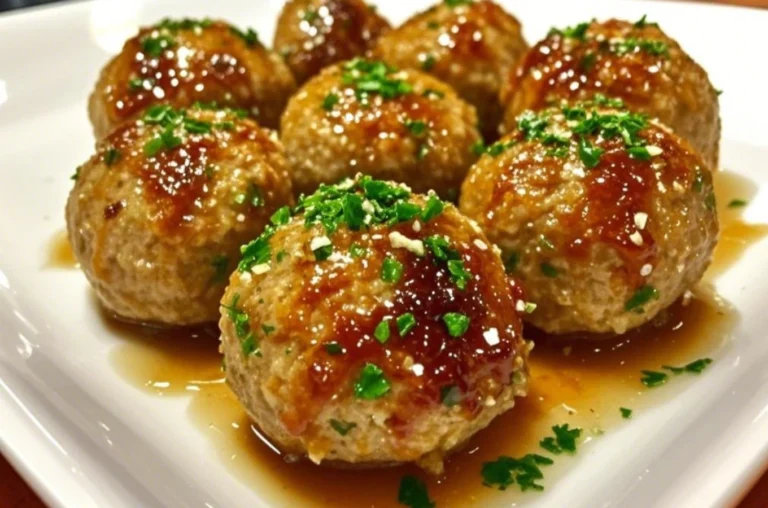Best Roast Turkey – Juicy, Golden & Full of Flavor: The Ultimate Guide for Beginners
Table of Contents
There’s nothing quite like the moment when you pull a perfectly roasted turkey from the oven – that golden-brown skin glistening, the rich aroma filling your home, and the proud feeling knowing you’re about to serve something truly special. Whether you’re preparing for a holiday feast or simply want to master this classic dish, this guide will ensure your turkey becomes the centerpiece everyone remembers – juicy, flavorful, and picture-perfect.
The journey to turkey perfection isn’t complicated, but it does require attention to detail. By following the right techniques, you’ll transform an ordinary bird into an extraordinary meal that your guests will rave about long after the last slice is gone. Let’s dive into everything you need to know to create the best roast turkey you’ve ever tasted.
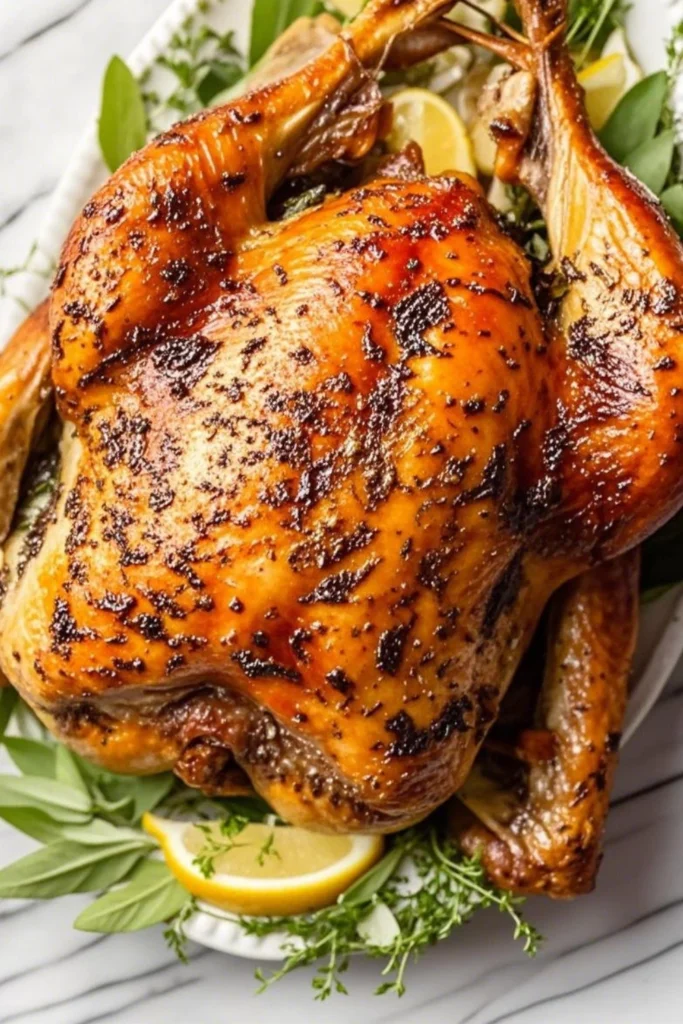
The Perfect Roast Turkey: What You’ll Need
Essential Equipment for Roast Turkey Success
Before diving into the cooking process, gathering the right equipment makes all the difference in achieving that perfect roast turkey:
- Roasting pan with rack: Elevates the turkey for even cooking and collects drippings for gravy
- Meat thermometer: The most critical tool – preferably instant-read for accuracy
- Kitchen twine: For trussing the turkey to ensure even cooking
- Basting brush: Helps apply butter and juices during roasting
- Sharp carving knife: Makes clean cuts for beautiful presentation
- Large cutting board with juice groove: Contains the messiness when carving
Investing in quality versions of these items pays dividends not just for your turkey, but for countless future meals.
Selecting the Best Turkey for Roasting
Your roast begins with choosing the right bird. When standing at the meat counter, consider these factors:
- Size matters: Calculate 1-1.5 pounds per person, allowing for seconds and leftovers
- Fresh vs. frozen: Fresh turkeys offer convenience but must be used quickly; frozen turkeys require advance planning for thawing but can be purchased well ahead
- Heritage options: While more expensive, heritage breeds offer exceptional flavor and were raised with more natural diets and living conditions
- Organic considerations: Look for organic certification if avoiding antibiotics and pesticides is important to you
- Natural choices: “Natural” turkeys contain no artificial ingredients but may still have been given antibiotics
Look for a turkey with intact skin, no discoloration, and check the sell-by date if buying fresh. For frozen turkeys, ensure packaging is intact with no signs of freezer burn.
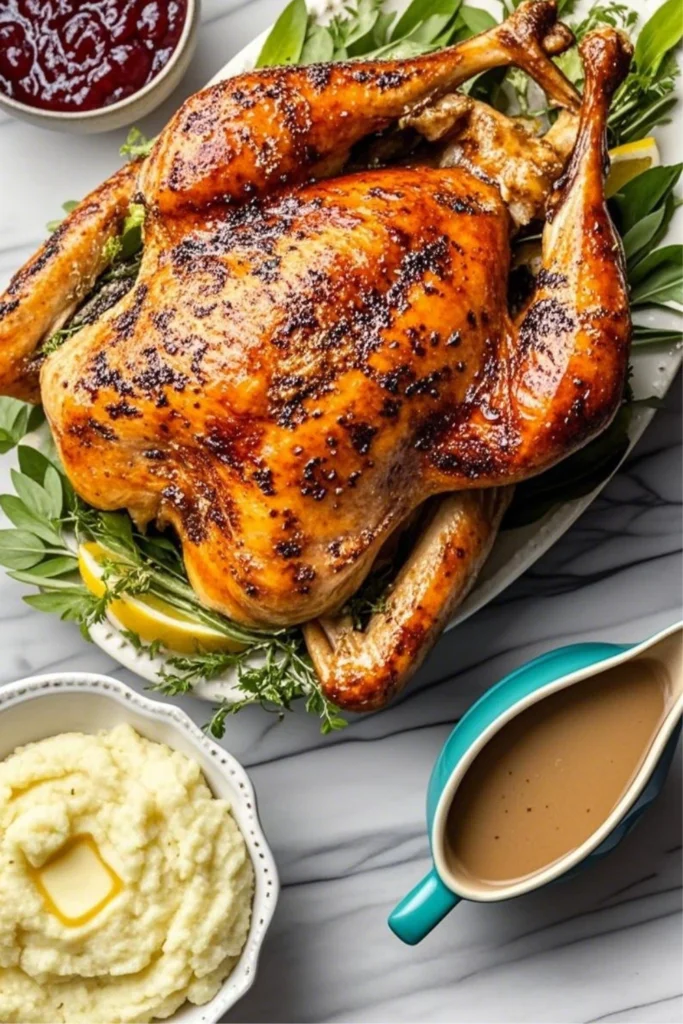
Turkey Preparation Timeline
Success begins with proper planning. Follow this timeline for stress-free preparation:
| Time Before Cooking | Preparation Step |
|---|---|
| 1-3 days before | Purchase fresh turkey or begin thawing frozen turkey in refrigerator |
| 24 hours before | Prepare and apply brine (if using wet brine) |
| 12 hours before | Remove from brine, pat dry thoroughly, and air-dry in refrigerator |
| 1 hour before | Remove from refrigerator to bring closer to room temperature |
| Just before cooking | Apply herb butter, season, and stuff with aromatics |
This schedule ensures your turkey is properly thawed, seasoned, and ready for its grand entrance into the oven.
The Ultimate Roast Turkey Recipe
Now for the main event – transforming your raw turkey into a masterpiece of culinary delight.
Ingredients
| Ingredient | Amount |
|---|---|
| Whole turkey (thawed if frozen) | 12-14 pounds |
| Unsalted butter, softened | 1 cup |
| Fresh herbs (rosemary, thyme, sage) | 1/4 cup, chopped |
| Garlic cloves | 6, minced |
| Lemon | 2, zested and quartered |
| Yellow onion | 2, quartered |
| Carrots | 4, cut into 2-inch pieces |
| Celery stalks | 4, cut into 2-inch pieces |
| Chicken or turkey broth | 2 cups |
| Kosher salt | 1/4 cup |
| Freshly ground black pepper | 2 tablespoons |
Preparation Method
- Preheat your oven to 450°F (232°C) to start with high heat for browning.
- Prepare the herb butter mixture by combining softened butter with chopped herbs, minced garlic, lemon zest, 2 tablespoons of salt, and 1 tablespoon of pepper. Mix until thoroughly combined.
- Prepare the turkey:
- Remove giblets and neck from the cavity (save for gravy if desired)
- Rinse the turkey inside and out with cold water
- Pat completely dry with paper towels (this step is crucial for crispy skin)
- Season the cavity with remaining salt and pepper
- Apply the herb butter mixture:
- Gently loosen the skin from the breast meat with your fingers
- Massage about half the herb butter underneath the skin directly onto the meat
- Rub the remaining butter all over the exterior of the turkey
- Pay special attention to the breast, which tends to dry out first
- Fill the cavity with quartered lemons, some onion pieces, and a handful of herbs. These aromatics infuse flavor from within.
- Truss the turkey by tying the legs together with kitchen twine and tucking the wing tips under the body to prevent burning.
- Prepare the roasting pan by spreading the remaining onions, carrots, and celery across the bottom. Place the turkey on the rack, breast side up.
- Pour broth into the bottom of the pan to prevent drippings from burning and to maintain moisture in the oven.

Cooking Instructions
- Start with high heat by placing the turkey in the preheated 450°F oven for 30 minutes to develop that gorgeous golden color.
- Reduce the temperature to 350°F (175°C) for the remainder of the cooking time.
- Calculate approximate cooking time based on weight. For a 12-14 pound unstuffed turkey, expect about 3 to 3.5 hours total cooking time, but always rely on your thermometer, not the clock.
- Baste every 30-45 minutes after the first hour of cooking. Tilt the pan to collect juices, then brush them over the breast and legs.
- Cover loosely with foil if the skin browns too quickly, especially on the breast.
- Check for doneness by inserting a meat thermometer into the thickest part of the thigh without touching bone. The turkey is done when the thigh registers 175°F and the breast registers 165°F.
- Allow the turkey to rest for at least 30 minutes (and up to 45) before carving. This crucial step allows juices to redistribute throughout the meat.
During the resting period, the internal temperature will continue to rise slightly, and the juices will settle back into the meat rather than running out when carved. Use this time to prepare gravy, warm side dishes, or simply enjoy a well-deserved glass of wine.
Troubleshooting Your Roast Turkey
Even experienced cooks encounter challenges. Here’s how to address common turkey troubles:
Dry Breast Meat Solutions
If your breast meat consistently turns out dry, try these techniques on your next roast:
- Start the turkey breast-side down for the first hour, then flip
- Apply a butter-soaked cheesecloth over the breast during cooking
- Use a turkey brining method before roasting
- Consider spatchcocking (removing the backbone and flattening) for more even cooking
Undercooked Dark Meat Fixes
When the breast is done but the dark meat needs more time:
- Shield the breast with foil while the dark meat continues cooking
- Separate the legs and thighs and return them to the oven if necessary
- Next time, consider loosely covering the breast for the first portion of cooking, then uncovering to brown
Quick-Cooking Turkey Solutions
If your turkey is cooking faster than anticipated:
- Lower the oven temperature immediately by 25-50 degrees
- Cover the entire turkey with foil to slow heat penetration
- Remove the turkey when properly cooked regardless of timing – it’s better early than overcooked
Torn Skin Remedies
If the skin tears during preparation:
- “Patch” small tears by brushing with butter, which acts as an adhesive
- For larger tears, create a “bandage” with aluminum foil until the final 30 minutes
- Focus basting efforts away from the torn areas
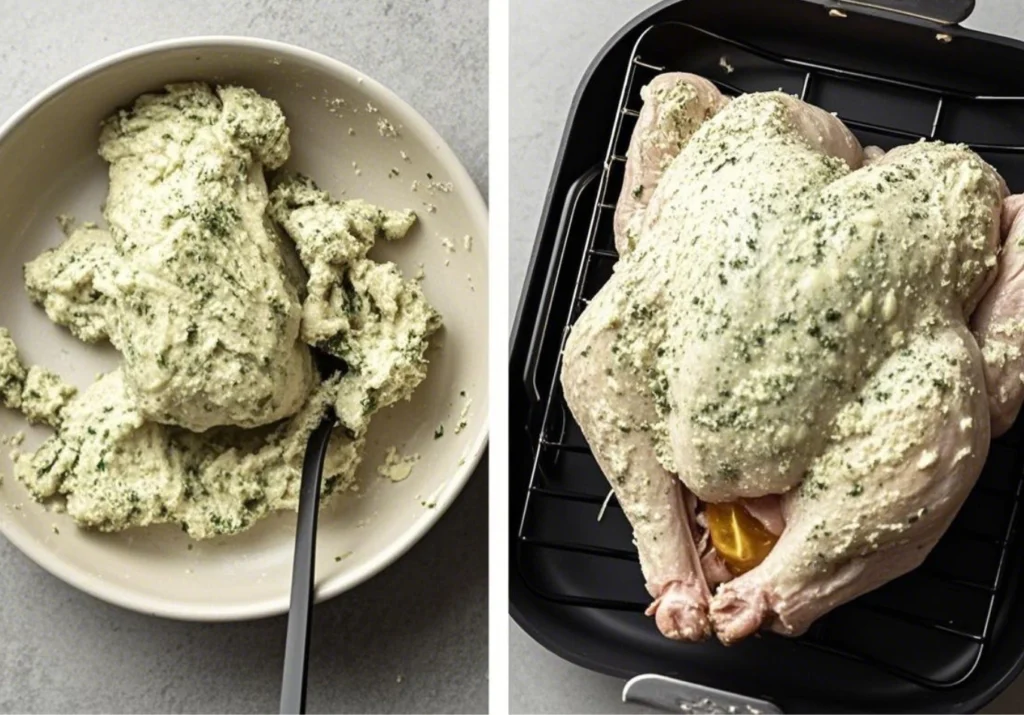
Carving Your Roast Turkey Like a Pro
Transform your roasted masterpiece into serving-ready portions with these professional carving techniques:
- Remove the legs and thighs first by cutting through the skin between the breast and drumstick, then popping the joint out of the socket.
- Separate thighs from drumsticks by locating the joint connecting them and slicing through.
- Remove the wings by pulling each away from the body and cutting through the joint.
- Carve the breast meat by first making a deep horizontal cut at the base of the breast, then slicing vertically from top to bottom, allowing slices to fall naturally.
- Present beautifully by arranging slices on a warmed platter, dark meat on the sides and white meat in the center, garnished with fresh herbs and citrus.
Carving at the table might be traditional, but carving in the kitchen offers better control and presentation opportunities. Consider bringing out the already-carved turkey on a decorated platter for maximum impact.
Make-Ahead Turkey Gravy
Elevate your roast turkey with silky, flavorful gravy made partially ahead to reduce day-of stress:
| Ingredient | Amount |
|---|---|
| Turkey or chicken broth | 4 cups |
| Turkey drippings | 1-2 cups |
| All-purpose flour | 1/4 cup |
| Unsalted butter | 4 tablespoons |
| Fresh herbs (thyme, sage) | 1 tablespoon, chopped |
| Salt and pepper | To taste |
Two days before serving, make a base gravy with butter, flour, and broth. On cooking day, enhance it with strained drippings from your roasted turkey for that authentic roasted flavor. Keep warm in a thermos if needed before serving.
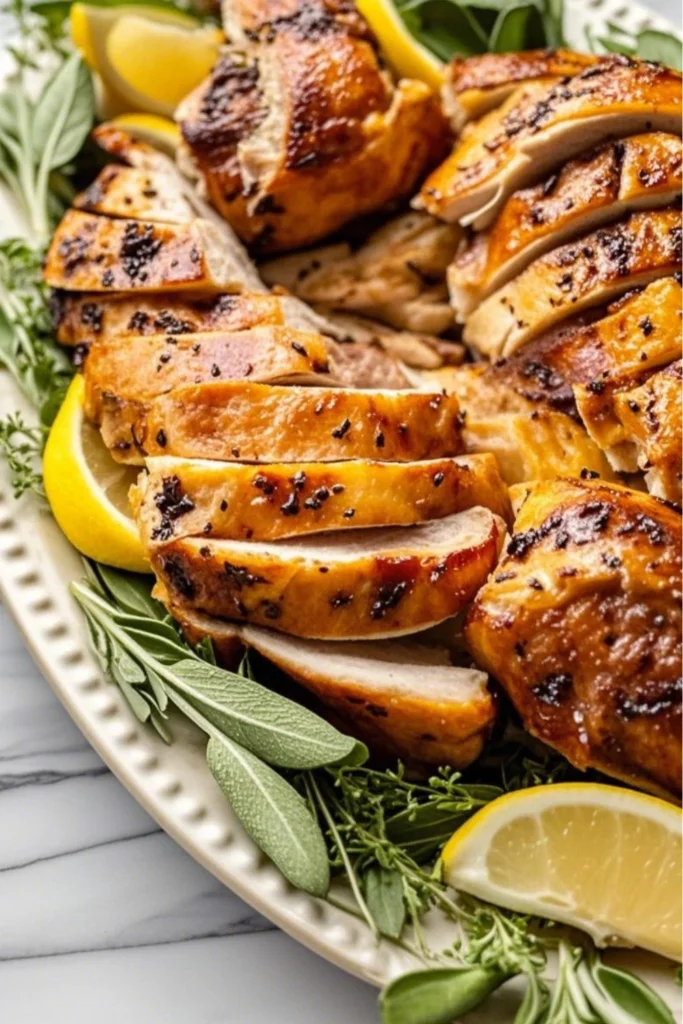
Serving Suggestions and Accompaniments
Your magnificent roast turkey deserves equally impressive accompaniments:
- Classic sides: Creamy mashed potatoes, cranberry sauce, and savory stuffing create the traditional experience
- Vegetable options: Roasted Brussels sprouts, glazed carrots, or green bean casserole add color and nutrition
- Bread selections: Fluffy dinner rolls or cornbread complement the meal perfectly
- Wine pairings: Pinot Noir or Chardonnay for white meat lovers; Syrah or Zinfandel for those who prefer dark meat
For non-holiday meals, consider serving your roast turkey with lighter sides like a crisp salad, roasted seasonal vegetables, or ancient grain pilaf for a healthier approach.
Storing and Using Leftover Roast Turkey
Extend the enjoyment of your turkey beyond the main event:
- Proper storage: Refrigerate leftovers within two hours of cooking
- Packaging: Store meat separated from bones in shallow containers for quick cooling
- Safety: Consume refrigerated turkey within 3-4 days, or freeze for up to 3 months
- Reheating: Warm turkey gently with a splash of broth to maintain moisture
Transform leftovers into entirely new meals – turkey soup, enchiladas, pot pie, sandwiches with cranberry spread, or hearty chef’s salads. Your creativity in repurposing leftovers ensures nothing goes to waste.
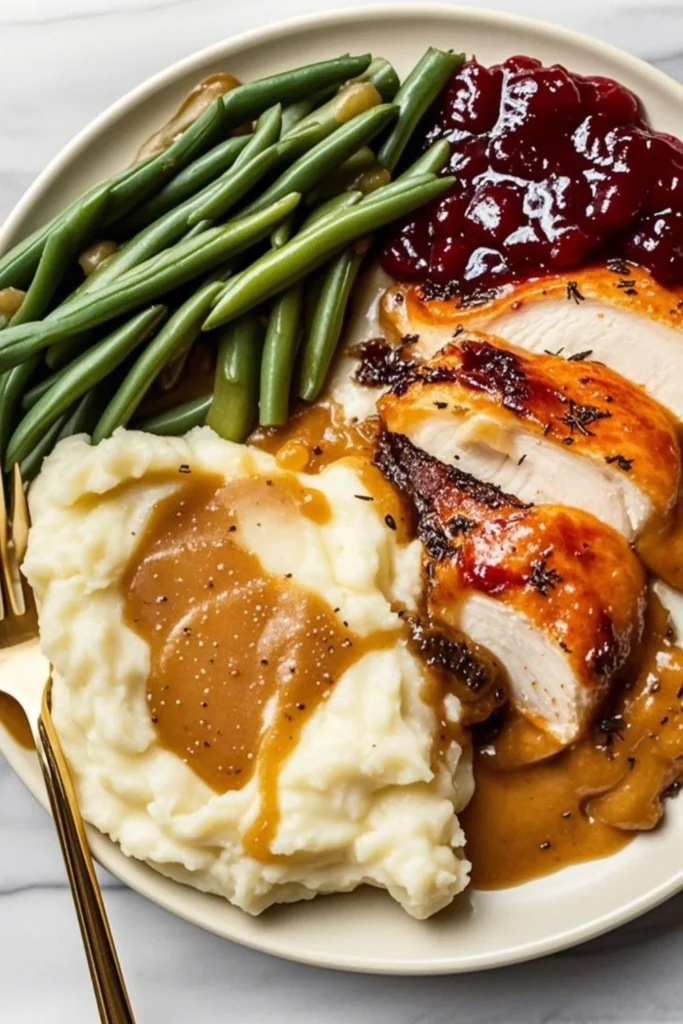
Conclusion
Mastering the art of roasting turkey opens doors to memorable gatherings and satisfied guests. The key lies in proper preparation, attention to temperature, and respecting the crucial resting period. While it might seem daunting initially, each turkey you roast builds confidence and skill.
Remember that small details make significant differences – from thoroughly drying the skin before roasting to checking doneness with a reliable thermometer rather than relying solely on cooking times. Your dedication to these details transforms an ordinary meal into an extraordinary dining experience.
So preheat that oven, prepare your aromatics, and embrace the rewarding process of creating a truly magnificent centerpiece for your table. Your perfectly roasted turkey – juicy, golden, and full of flavor – awaits, ready to become the highlight of your next special meal and the source of delightful leftovers in the days that follow.
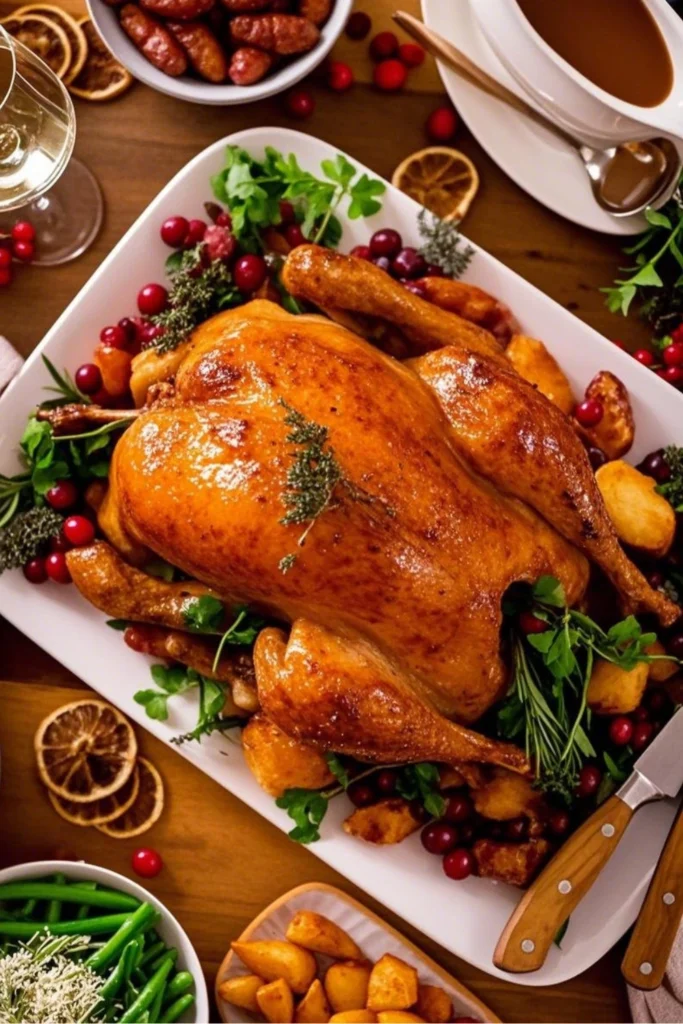
Frequently Asked Questions About Roast Turkey
How long should I cook my roast turkey?
The general rule is about 13 minutes per pound for an unstuffed turkey at 350°F, but this varies based on oven accuracy and starting temperature. Always verify doneness with a meat thermometer inserted into the thickest part of the thigh, which should register 175°F. The breast should reach 165°F for the best roast turkey results.
Should I stuff my best roast turkey?
While stuffing inside the turkey is traditional, it significantly increases cooking time and can lead to uneven cooking. For food safety, stuffing must reach 165°F, which often means the surrounding meat overcooks. For the juiciest best roast turkey, cook your stuffing separately as a “dressing” and simply place aromatics in the cavity.
How do I keep my roast turkey from drying out?
Achieving a juicy best roast turkey requires several techniques: brining before roasting, starting breast-side down or shielding the breast with foil, not overcooking (use that thermometer!), and allowing a proper rest before carving. Also, larger turkeys tend to dry out more easily than medium-sized birds, so consider cooking two smaller ones for very large gatherings.
Can I prepare parts of my roast turkey recipe in advance?
Absolutely! Make your life easier by preparing the herb butter mixture up to three days ahead, chopping vegetables the day before, and even making gravy base in advance. You can also brine your turkey 1-2 days before roasting. These preparations make the cooking day much more manageable while still achieving the best roast turkey.
What’s the best way to thaw a frozen turkey before roasting?
The safest method is thawing in the refrigerator, allowing approximately 24 hours for every 4-5 pounds of turkey. For a quicker approach, use the cold water method by submerging the wrapped turkey in cold water, changing the water every 30 minutes, allowing about 30 minutes per pound. Never thaw at room temperature, which creates food safety risks that could compromise your best roast turkey experience.

